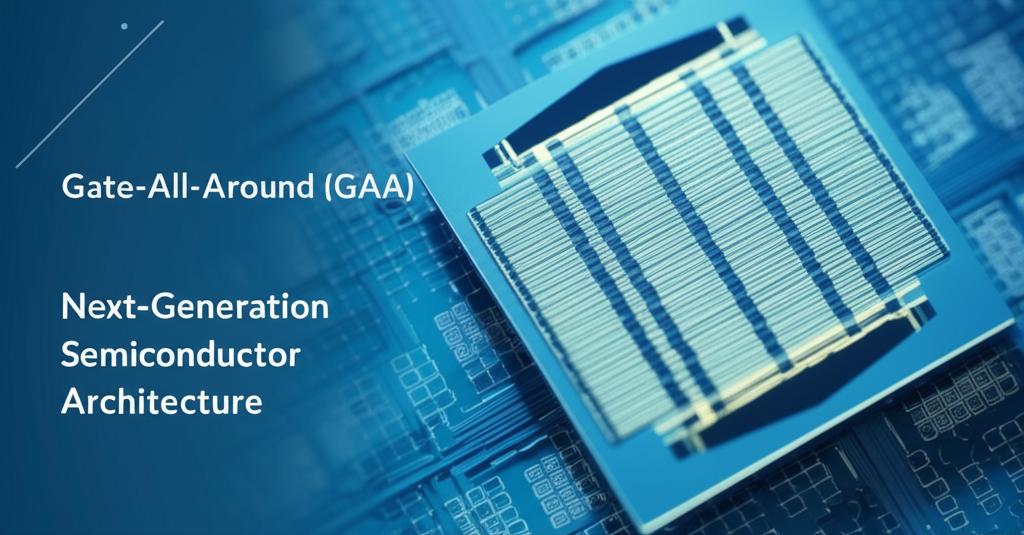As the relentless march of semiconductor technology pushes beyond the limits of FinFET transistors, the industry is embracing Gate-All-Around (GAA) architecture as the next crucial step in enabling more powerful, efficient, and compact integrated circuits. This transition, primarily occurring at the 3-nanometer (nm) and upcoming 2nm process nodes, is vital for sustaining performance gains demanded by applications like artificial intelligence (AI), high-performance computing (HPC), and advanced mobile devices.
Limitations of FinFET and the Rise of GAAFor several technology generations, FinFETs, with their 3D fin-like channel structure where the gate controls the channel on three sides, have been the workhorse. However, as transistors shrink further, FinFETs encounter significant challenges. Below 5nm, and particularly approaching 3nm, issues like increased electrical characteristic variability, difficulty in controlling leakage current, and physical scaling limitations become pronounced. The discrete nature of adding fins to increase drive current also impacts footprint efficiency. These limitations necessitated a fundamental shift in transistor design.
Understanding the Gate-All-Around ArchitectureGAA FETs represent this shift by fundamentally changing how the gate interacts with the channel. Instead of wrapping around three sides like a FinFET, the GAA gate material completely surrounds the channel on all four sides. This "all-around" structure offers superior electrostatic control over the channel. It effectively minimizes leakage current when the transistor is off and can enhance drive current when it's on, leading to faster switching speeds and improved power efficiency.
The most common implementation of GAA utilizes horizontally stacked "nanosheets." These are extremely thin, sheet-like layers of silicon (often alternating with silicon-germanium during fabrication) that form the channel. The gate material then envelops these stacked sheets. An alternative structure involves using "nanowires," which are essentially very thin wires forming the channel, also fully surrounded by the gate. The nanosheet approach offers an advantage: designers can adjust the width of the nanosheets to fine-tune the transistor's drive current for specific needs, offering more design flexibility compared to the fixed fin height of FinFETs.
Key Advantages of GAA TransistorsThe move to GAA architecture brings several critical benefits:
- Enhanced Electrostatic Control: Wrapping the gate around the entire channel provides significantly better control over current flow, crucial for suppressing short-channel effects as dimensions shrink.
- Reduced Leakage Current: Superior gate control drastically reduces current leakage when the transistor is off, leading to lower static power consumption.
- Improved Power Efficiency: Reduced leakage and the potential for lower operating voltages contribute to overall better power efficiency, vital for mobile devices and large data centers. Samsung, for example, reported its 3nm GAA technology consumes significantly less power compared to its 5nm FinFET process.
- Increased Performance: Better current control and potentially higher drive current for a given footprint translate to faster switching speeds and higher overall chip performance.
- Continued Scalability: GAA architecture overcomes many FinFET scaling barriers, allowing transistor density to continue increasing, pushing Moore's Law into the angstrom era (sub-nanometer).
- Design Flexibility: Nanosheet-based GAA allows channel width tuning, providing designers more options to optimize for power or performance.
Major semiconductor foundries are actively implementing GAA. Samsung notably pioneered the mass production of GAA transistors starting with its 3nm node in 2022. TSMC and Intel are incorporating GAA (using terms like Nanosheet and RibbonFET, respectively) into their upcoming 2nm and Intel 18A process nodes, expected to enter production around 2025. High-performance mobile chips are leading the adoption wave, with HPC and AI processors following closely.
However, manufacturing GAA transistors is significantly more complex than FinFETs. Creating the stacked nanosheet structure involves intricate steps of depositing alternating layers (like silicon and silicon-germanium), precise etching to remove sacrificial layers and form the channel space, and then depositing the gate dielectric and metal uniformly around the nanosheets using techniques like Atomic Layer Deposition (ALD). Ensuring uniformity and minimizing defects in these nanoscale structures is critical and requires advanced techniques like Extreme Ultraviolet (EUV) lithography and sophisticated metrology and inspection. These complexities contribute to higher initial development and manufacturing costs.
The Future Beyond GAAEven as GAA is being implemented, research is already underway for what comes next. Future potential architectures include Complementary FETs (CFETs), which involve stacking NMOS and PMOS GAA transistors vertically on top of each other to further boost density. Forksheet FETs are another variation aiming to improve scalability. Additionally, innovations like Backside Power Delivery Networks (BSPDN), which move power routing to the back of the wafer, are often being developed in conjunction with GAA to further optimize performance and chip layout.
In conclusion, Gate-All-Around transistor technology represents a pivotal evolution in semiconductor architecture. By providing superior control, power efficiency, and scalability compared to its FinFET predecessor, GAA is unlocking the performance required for the next generation of computing, driving innovation across mobile devices, AI, cloud computing, and beyond as the industry pushes into the angstrom era.

